The setting sun set the seascape afire as I positioned my 20-foot center-console tight to a rip formed by the flooding tide. My brother landed a long cast inches from the rocks of Chesapeake Bay Bridge-Tunnel. Roger pumped the rod tip once, twice and on the third, a huge boil opened under his lure. The line sprang taut. Roger set the hook, and a 30-pound striper exploded into the air.
SWS Planner:
Virginia Trophy Striped Bass
What: Striped bass
When: Year-round; spring for trophies
Where: Virginia, Lower Chesapeake Bay
Who: For more information on Virginia striped bass, go to: mrc.org. These charter captains are experts in the subject:
Capt. Zach Hoffman Salt Treated Fishing 757-817-1388 salttreatedfishing.com
Capt. Ben Shepherd Above Average Sportfishing 757-621-5094
Capt. Herb Gordon Pretty Work Charters 757-236-4665
Capt. Craig Paige Paige II Charters 757- 672-9381 paige2charters.com
Pop on Top
Chesapeake Bay Bridge-Tunnel creates a 17-mile-long artificial reef running across the mouth of America’s largest estuary. The twin-span bridge includes two underwater tunnels that enter and exit the water at mile-long rock islands. In local lingo, the four islands are numbered, starting with First Island at the south end of the bridge to Fourth Island, which is 10 miles to the north. Each island is divided into three sections: the groin where the rocks meet the roadway, the rock island, and the spine where the rocks drop into the water over the tunnel. While this is an easy and reliable place to find school-size rockfish year-round, the best time for trophy stripers is early spring. Once the water temperature nears 60 degrees, big, hungry spring striped bass stage along the rocks, picking off bait as it sweeps overhead.
Dawn and Dusk
The best times are early in the morning or just before dark. Stage the boat up-current and within casting distance of the bridge. Stay on the wheel and throttles to keep the boat positioned while you work the length of the island. For starters, cast a 5- to 8-inch swimbait or a 2- to 3-ounce metal or soft-plastic jig to the rocks or pilings with a medium-action spinning rod. Work the lure back steadily, letting it sweep along the rocks or drop behind the pilings. But nothing is more fun, or as deadly, as a topwater popper. Choose a 5- to 8-inch cup-faced chugger-style popper that makes a lot of noise. Match it to a 7- to 8-foot spinning outfit spooled with 30-pound braid. Add 6 feet of 50-pound fluorocarbon leader to protect against the rocks and barnacles. The hot spot for poppers is the spine and on the rip that forms over the two tunnels. Cast into the smooth side of the rip, and pop the lure in the current, letting it dance in the rip as you work it back. Fish often miss the hook on the first strike, so wait a split second to let one grab the lure. If the fish misses entirely, leave the popper in place and give it a couple of seductive twitches. Once hooked, stripers turn and run, dragging the line over rocks, barnacles and snags. Hold the boat up-current of the bridge, and keep the rod tip high. Set the drag light — 4 to 6 pounds — and take your time fighting the fish to the boat. As dusk fades to dark, switch to a 5- to 6-inch swimming shad, and keep catching into the night. During the day, switch to a lipped twitchbait.
Surface Warfare
A few weeks later, fishing on Harry Hindmarsh’s 16-foot skiff, we’re patrolling the sloughs and sandbars around Virginia’s Eastern Shore barrier islands. I’m stationed on the bow, searching for signs of fish, while Hindmarsh perches on the stern casting platform. Each of us holds a medium spinning rod rigged with a 6-inch swimming shad, in perfect sight-casting conditions. As the ebbs, rips and boils form over the sandbars that pock the large bay, we putt over to investigate one of the rips that appears to be moving. At 50 yards, I make out a school of 30-pound stripers packed like sardines. From 25 yards, I cast a few feet ahead of the mob. Hindmarsh’s lure arcs over my head and splashes down on the other side of the school. Within seconds, we are both hooked up. At first, the fish fight to stay with the school, but eventually we get them turned and work them to the boat. We go into maniac mode. The school moves off, but we’re in pursuit with the trolling motor. In minutes we’re hooked up, and our 50-pound braid makes short work of a pair of 40-inchers. After a quick release, we return to the hunt. By now, more schools have appeared. While one of us fights a fish, the other gives chase and keeps an eye on the rest of the school. This isn’t fun fishing, this is sport fishing, and it’s game on!
Timing Is Everything
Finding a school of big rockfish on the surface doesn’t happen every day, but anglers who patrol the lower Chesapeake Bay and Eastern Shore islands from late April to mid-June have a good shot at getting into stripers, red drum and cobia. While a small skiff is perfect for exploring the shallow barrier-island bays, a center-console with a tower gives sight-casters the advantage in open water. The fish seem to like moving current and calm conditions. Moreover, clear skies and clean water make it easier to spot the fish swimming on the surface. There is no pattern to where and when the fish surface. I’ve caught them in dozens of places over the years but rarely in the same place twice. The best strategy is to cover a lot of water and keep your eyes peeled. Drive around long enough, and you’ll encounter epic surface action with striped bass. Then it’s time to put on your game face and get ready for battle.
SWS Tackle box:
Virginia Trophy Striped Bass
The key to catching these fish is long, accurate casts with lures that mimic the available forage: mullet, bunker and crabs.
Reels: Shimano Stradic 5000 or Calcutta CT 400D, or equivalent
Line: 30- to 50-pound braid
LEADER: 50-pound fluorocarbon
Rods: Shimano Terez 8-foot, medium-action spinning or Teramar 8-foot, medium-action casting, or equivalent
Lures: 5-inch Creek Chub Knucklehead, 5- to 6-inch Storm WildEye Swim Shad, 5- to 6-inch Berkley PowerBait Swim Shad, 2- to 4-ounce
Hopkins No=EQL or similar spoon
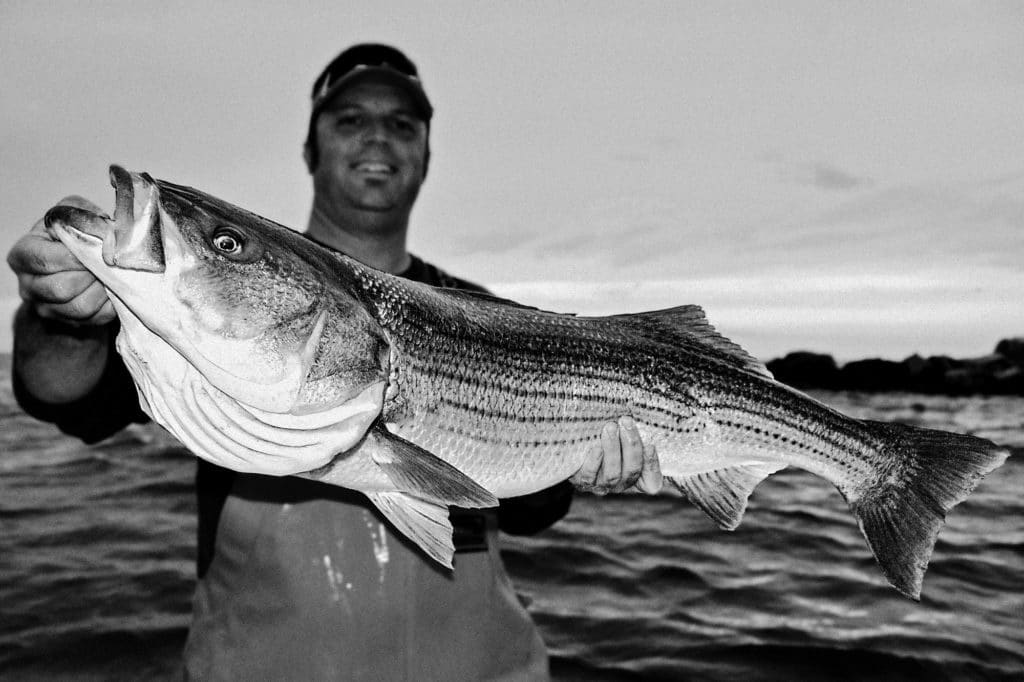
Bay Whopper
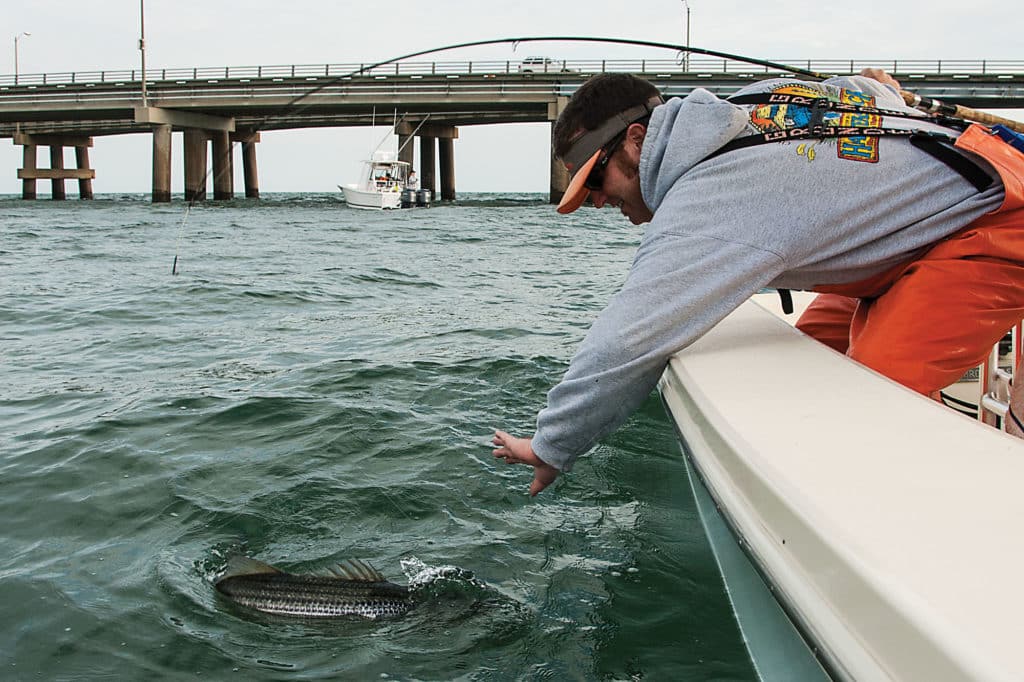
Pile On
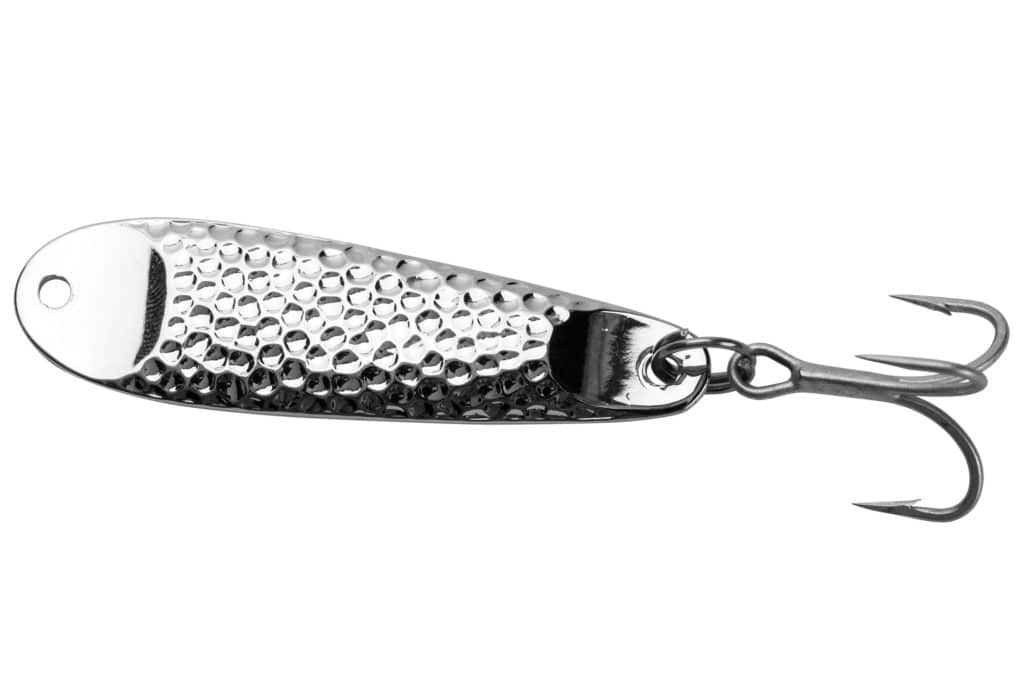
Acme Trophy Hammered Spoon
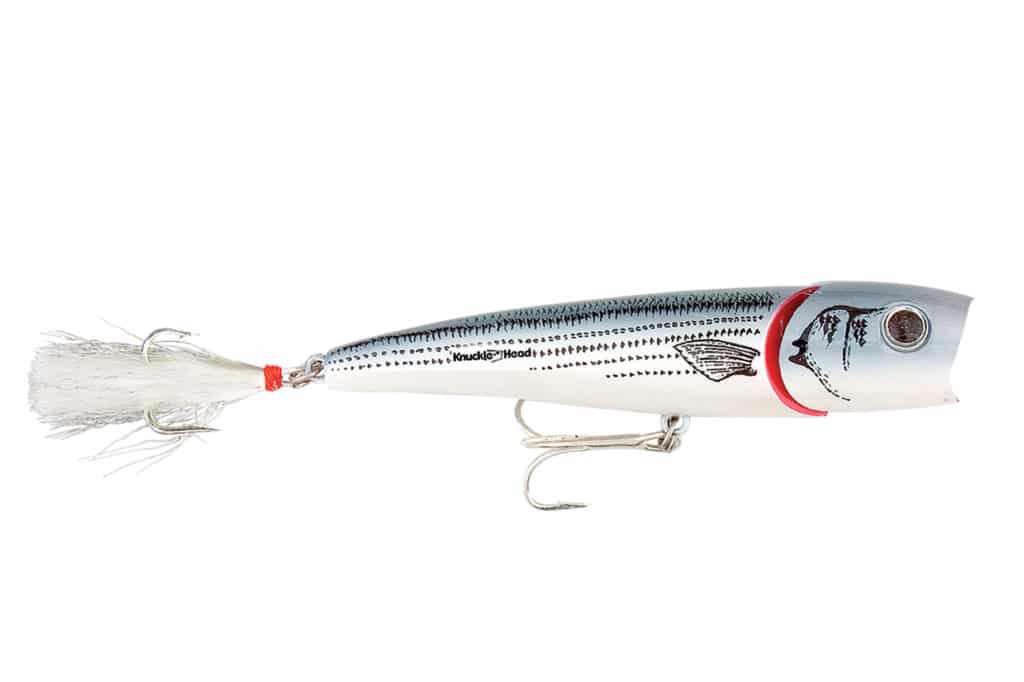
Creek Chub Knucklehead
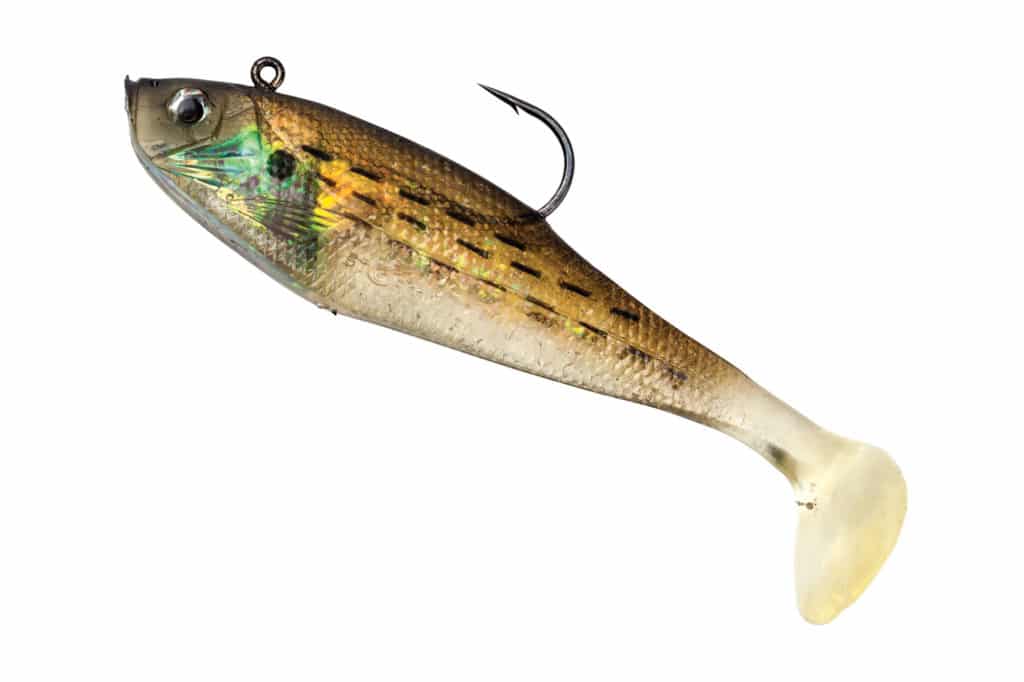
Storm Wildeye Swim Shad
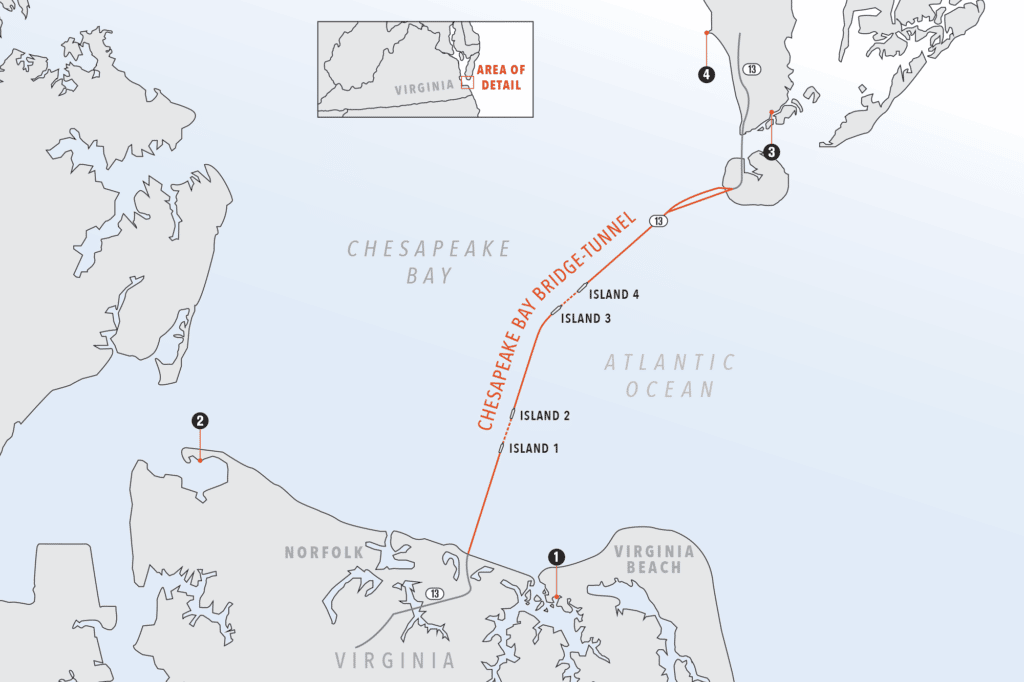
CBBT AREA Overview
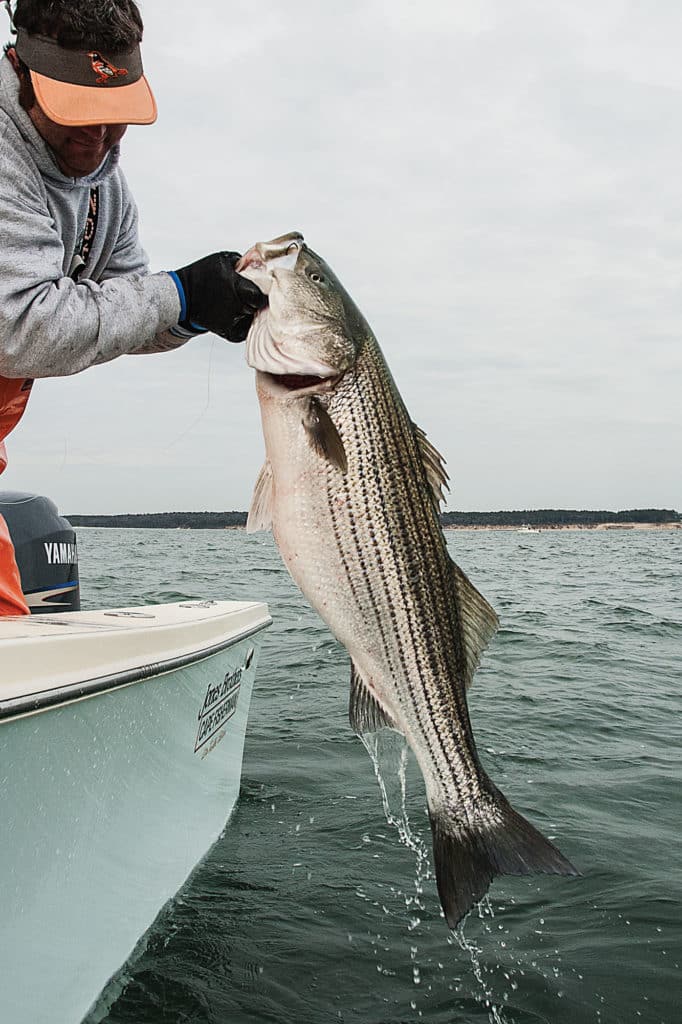
High Grade
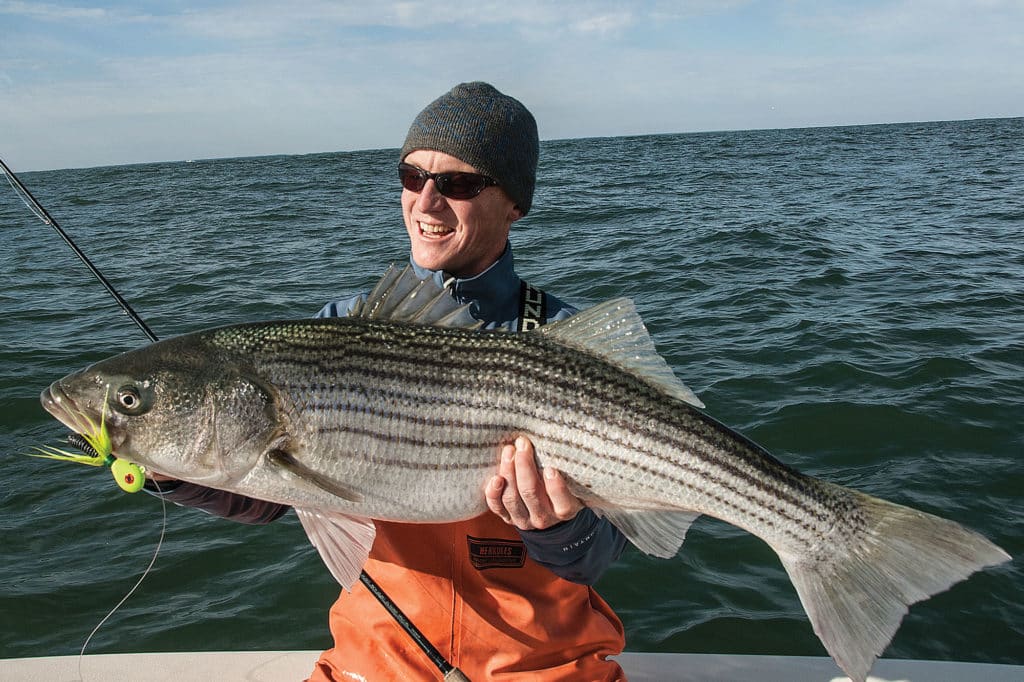
Reliable
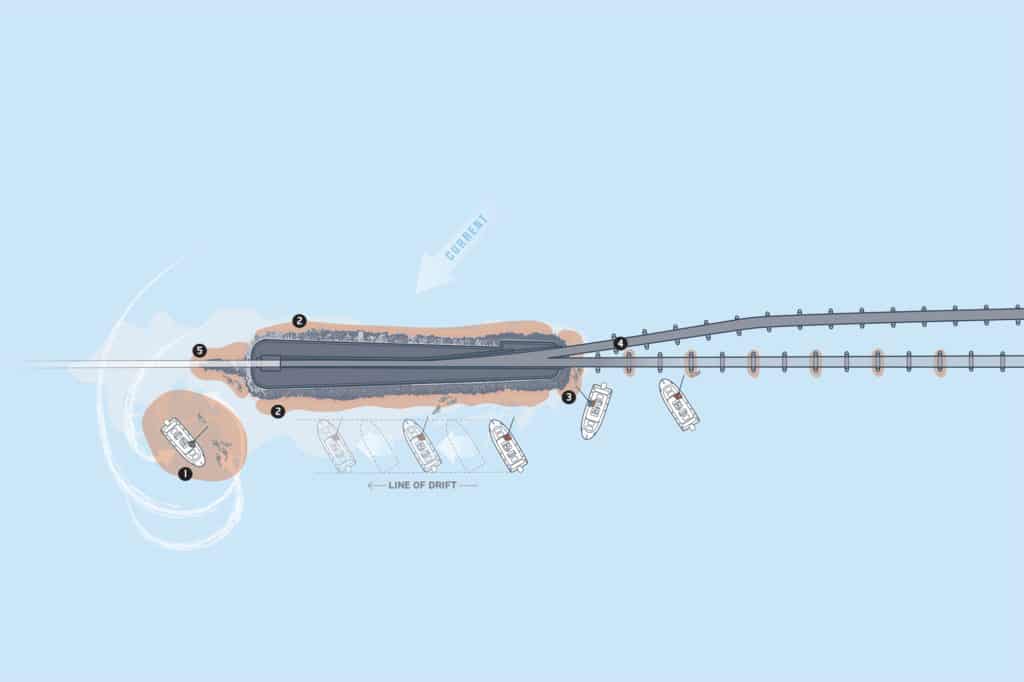
CBBT Island anatomy
1. Eddies – Look for bass on the eddy lines off the islands and between the tunnels. 2. Island riprap – Stripers hold in the rocks on either side of the island, depending on current and tide. And also, the drift Line: Set up a power drift to cover the mile-long islands from one end to the other. 3. Groins – Pay attention to abrupt drop-offs where the roadway meets the island. 4. Pilings – Miles of bridge pilings offer holding water on the upstream and down-stream sides. 5. Spines – Rocky points descend off the tunnel-end of the islands and offer great popper water. Tim Barker









